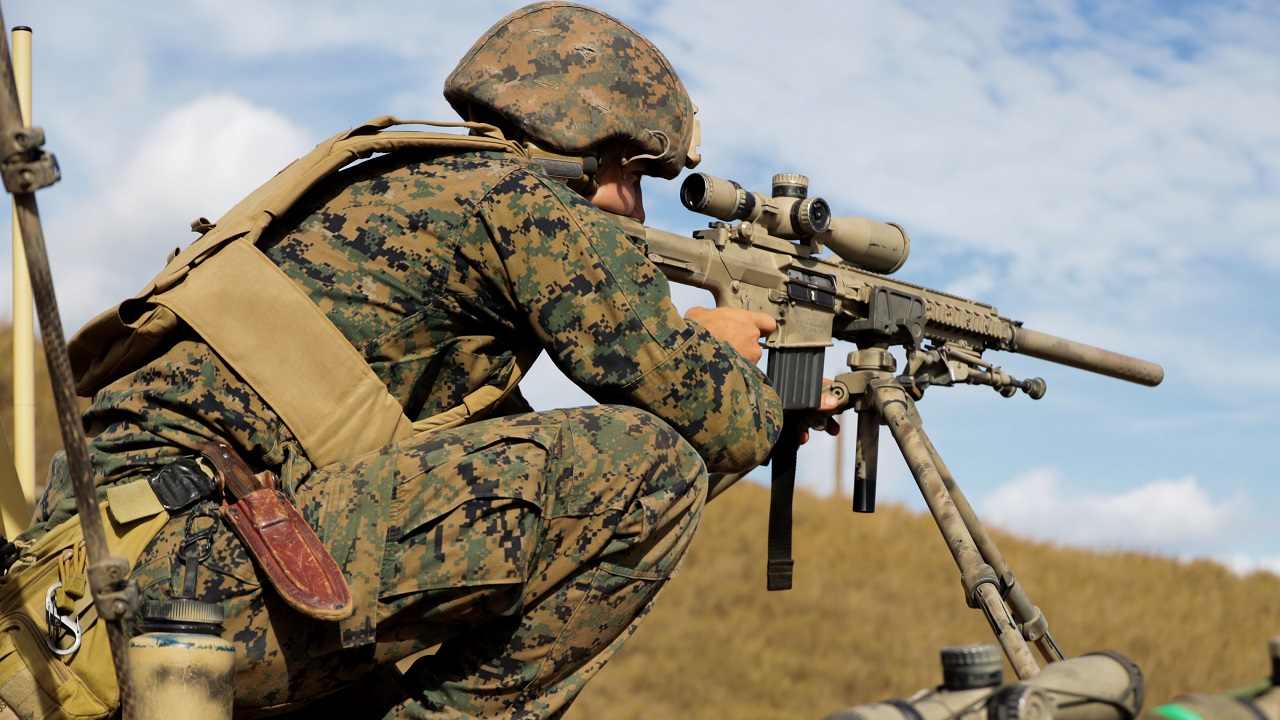The United States has had numerous opportunities since its founding to ponder the existence of its Marine Corps, and there have been several near-death moments. Statute and custom now serve to guarantee the Marines, but necessity has always been the best argument. “America’s 911 Force”, “America’s Force in Readiness”, “First to Fight”—all of these slogans point back at a military force whose primary virtue is immediacy; a force whose employment reflects strategic imperatives to deter aggressors and assure friends from a posture of presence, lethality, flexibility, and capability.
Much ink has been spilled on the innovations of Marine Corps Commandant General David Berger’s “Force Design 2030” and the controversy it has engendered within the retired USMC general officer community. This essay takes no position on that discussion.
Putting aside Berger’s reputation for innovation, he has clearly and consistently articulated the Marine Corps’ continuing leading role in crisis response. There is no evidence that either he or his Service in any way wishes to de-emphasize this defining responsibility.
However, its capability and capacity to do so is fraying, and Congress and the Department of Defense should act to reverse this decline. The most effective means to do so would be to build more amphibious ships, the means to achieve the immediacy that is the Marines’ greatest virtue.
The earliest manifestation of this decline was the post-Cold War move from a “three-hub Navy” (Europe, Middle East, Pacific hubs) to a “two-hub Navy”(shared Europe/Middle East hub, Indo-Pacific hub), one that by definition meant that on-call crisis response would come later and with diminished impact (for more on hubs see this and this). Throughout the 2010’s, the number of active amphibious ships (LHD, LHA, LPD, LSD) varied between 28 and 34 in service to the two-hub concept, even though the desired number varied between 33 and 38 (even as the then-Commandant declared a need for 50).
Put another way, in the days before China became the central focus of our national security strategy and Russia was carrying out a full-scale war in Ukraine (though it was clearly showing its intent), the Marines needed 50 amphibs to carry out its defining “two-hub” crisis response mission while modulating that to a resource-constrained requirement for between 33 and 38. When General Dunford made his statement about 50 amphibs above, the Marines had 31 amphibs to work with, which is today’s stated requirement.
Another example of the mismatch between amphibious shipping available and the crisis response mission was the standup in the 2010’s of USMC “Special Purpose Marine Air-Ground Task Force (SPMAGTF)—Crisis Response—Africa”, which was essentially a land-based Marine formation without the ships, not because this was a more effective means to employ Marine combat power, but because sufficient ships were not available.
Recent events add more alarming evidence to the mismatch between USMC crisis response and amphibious shipping capacity, to include the inability to sortie an amphibious response force from the Atlantic Fleet to Europe as the Ukrainian crisis unfolded (there not being one there already as a result of the two-hub construct), and more recently, Commandant Berger expressing frustration that the Marines were unable to respond to the devastating humanitarian crisis flowing from the earthquake in Turkey and Syria. “We didn’t have a Marine Expeditionary Unit, a MEU, nearby that could respond…I owe the secretary of defense, the President—we joint chiefs owe them options…all the time. Here, I felt like the best option, we couldn’t offer them because we have the Marines and the equipment and they’re trained, we didn’t have the ships,” Gen. David Berger said during an interview with Defense One reporter Caitlin Kenney.
Given that the need for Marine Corps devotion to the everyday business of global crisis response today is as great as it was before great power competition re-emerged, it is illogical to assume that devotion can be pursued with an amphibious force structure less than that which was applied to the task then.
This is why the 31-ship requirement is problematic. If a 31 ship, two-hub approach required the Marine Corps to create a land-based crisis response SPMAGTF in the absence of great power competition, then its presence surely argues for force structure that not only addresses the innovative warfighting requirements of General Berger’s design, but also addresses known shortfalls in crisis response shipping.
Put another way, the Marine Corps requirement for amphibious ships must be large enough to meet the demands of global crisis response—which the post-Cold War two-hub approach did not meet—even as it evolves to meet the new mission and force structure requirements of General Berger’s force design.
With the passage of the 2023 National Defense Authorization Act (NDAA) charging the Marine Corps with determining amphibious shipping force structure requirements, General Berger and his team should closely review the logic behind the 38-ship requirement that existed for nearly a decade and apply it to a three-hub approach to the crisis response mission.
Furthermore, Marine Corps planners should then add to the requirement for traditional amphibious, lift those mobility requirements that arise from specific China-centric scenarios, including Expeditionary Advanced Base Operations (EABO). Funding China-centric innovations should not come at the cost of the Marines’ bread and butter crisis response capability.
The Marines should not be forced to choose between the two—both are critical to the security and prosperity of the United States, and both are derived from the unique characteristics of the Marine Corps.
Bryan McGrath is the Managing Director of The FerryBridge Group LLC, and the opinions expressed here are his alone.

